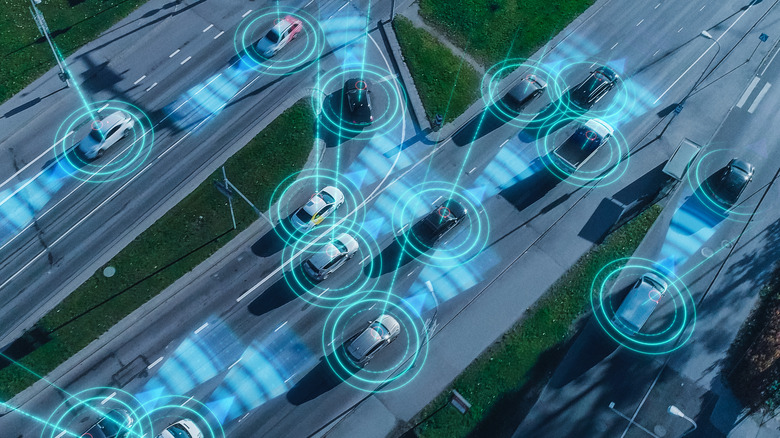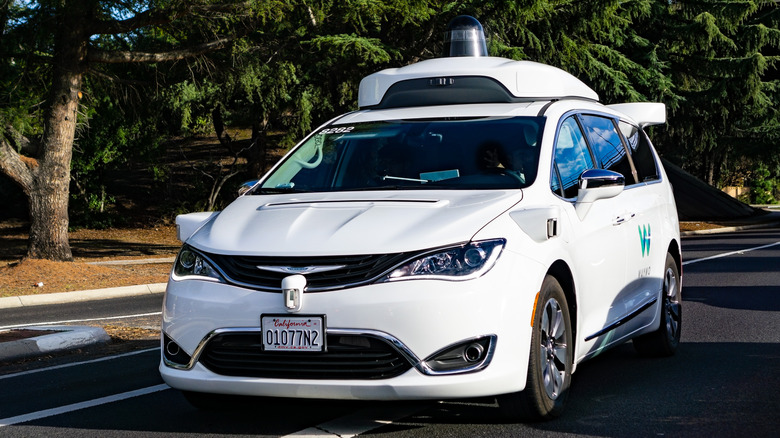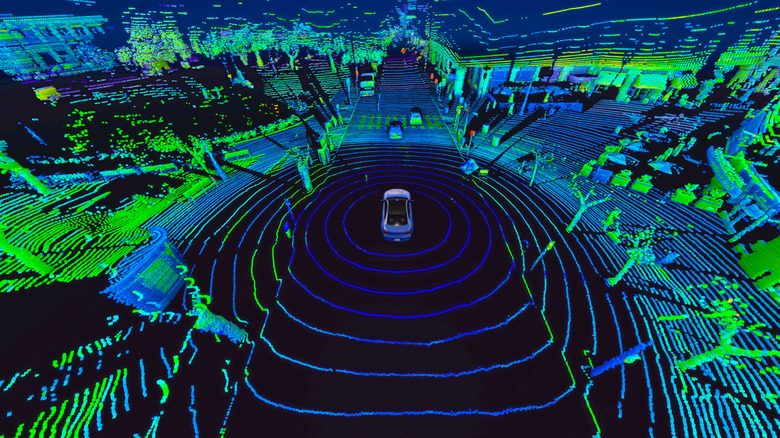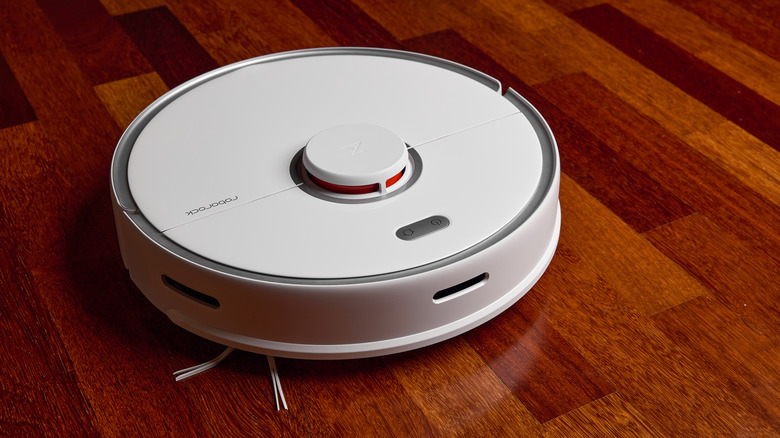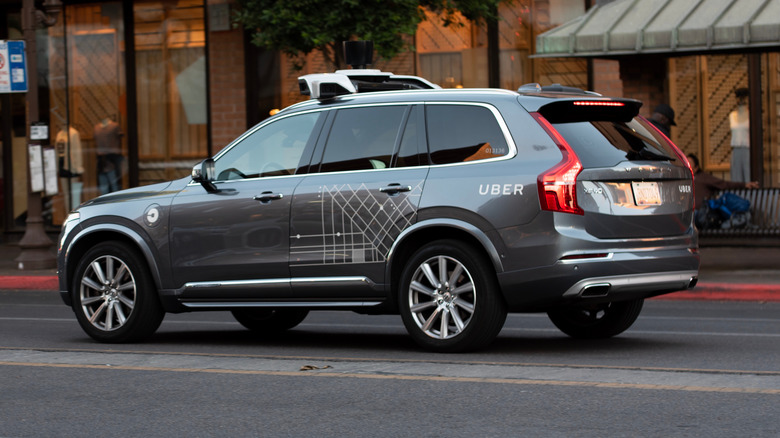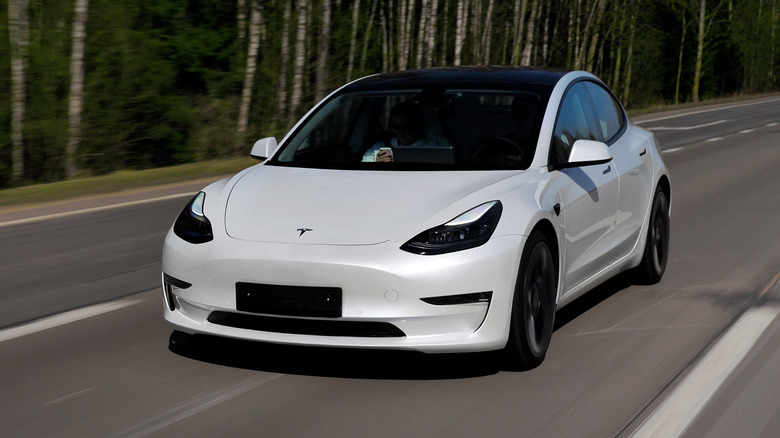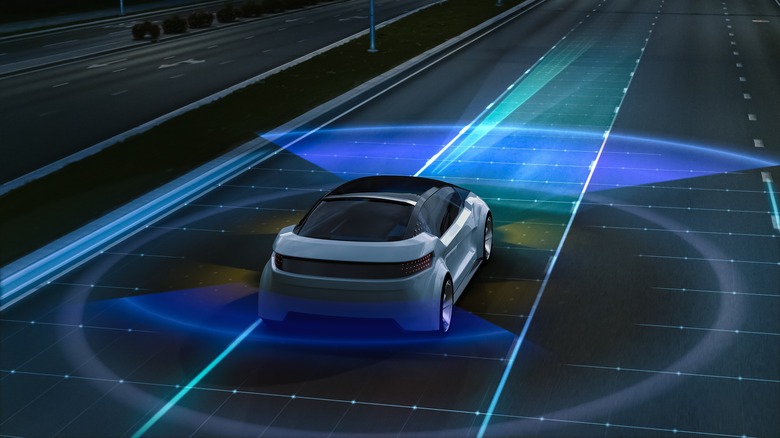LiDAR Explained: The Key To Advancing Autonomous Vehicle Safety
It wasn't too long ago that the automotive industry was awash with car manufacturers and tech startups proclaiming that self-driving cars were just around the corner. Tesla is perhaps the most famous example of a manufacturer being bullish on rapid automation, but other companies were just as confident. Ford announced in 2016 that it aimed to deliver a "high-volume, fully autonomous vehicle for ride sharing" by 2021, and BMW claimed in 2017 that it would have Level 5 technology ready around the same time.
Evidently, this hasn't happened, and one of the biggest reasons is the ongoing concern from regulators and the public about safety. Autonomous vehicles have been unable to prove their readiness to replace humans behind the wheel, with a string of high-profile (and sometimes fatal) accidents pouring cold water on the once-booming autonomous vehicle industry. For these systems to work, they need to be able to "see" the road and environment around them, and manufacturers use several different types of sensors to achieve that. However, the LiDAR system is proving to be one of the biggest sticking points so far.
What is LiDAR?
A conventional LiDAR (or Light Detection and Ranging) system uses a spinning infrared laser to send out pulses of light that reflect off the environment around them. The system detects and measures these reflected pulses, using the data to build up a 3D picture of nearby terrain and objects. Many early autonomous vehicle prototypes mounted these spinning lasers to the roof in bulky, unsightly cases, such as the Waymo car pictured above. In the years since, efforts have been made to better incorporate the systems with the existing shape of the car, but for now, it remains pretty easy to spot if a vehicle has a LiDAR system fitted.
The LiDAR system offers several advantages over other methods of detection. Cameras are often used by manufacturers to "see" the road around a car, but they're susceptible to being temporarily blinded by sudden changes of light (like coming out of a tunnel) or high levels of sun glare. Radar systems are also commonly used but are less accurate at identifying vehicles traveling at significantly slower speeds and can sometimes miss smaller vehicles like bicycles or motorcycles. LiDAR is less affected by these kinds of issues, although it's far from a perfect solution, especially in its current state.
Turning 3D into 2D
Although the map that the LiDAR system generates is 3D, many autonomous driving systems convert it into 2D before using it to navigate. The reason is simple: 2D maps require a lot less computing power, and most current in-car systems can't process 3D maps fast enough yet. In 2021, researchers at MIT unveiled new machine-learning systems that promise to drastically cut down on the computing power required to navigate with 3D maps, but for now, those systems remain in development.
The biggest issue with turning 3D data into 2D maps is that some information inevitably gets lost in translation. In a worst-case scenario, that information might be vital to distinguish what type of object is ahead of the car and affect the system's decision-making process when deciding how to react to it. On the contrary, using 3D data will, at present, mean a longer processing time, delaying the system's ability to interpret and respond to the data it has gathered.
Present system limitations
Timely data processing isn't the only limitation of current LiDAR systems. Much like cameras, LiDAR systems are vulnerable to being affected by bad weather, including rain, snow, and fog. The water droplets present in the air during any of these events can reflect or distort the signal emitted by the laser, causing inaccurate results. For the same reason, airborne dust particles can also cause problems. Research to address these problems is ongoing, but according to a recent paper by researchers at Cornell University, there are still significant gaps in the training data used to teach self-driving systems to account for adverse weather.
Not only is LiDAR susceptible to the weather, but it's also one of the more power-intensive sensor systems currently in use on self-driving cars. It's been estimated that just adding enough sensors for an autonomous vehicle to function could decrease an EV's range by 2–3%, and that's without taking into account the power-hungry computer system needed to process the data from those sensors. Given that range anxiety is still one of the most commonly cited barriers to EV adoption, anything that further reduces that range is a problem.
Other uses for LiDAR
While demand for LiDAR systems has increased in recent years with the increased interest in autonomous vehicles, the auto industry isn't the only place where LiDAR is used. It's also useful for geoscientists looking to map out large areas of terrain for research or monitoring purposes, with the LiDAR system attached to a helicopter or airplane to gather data. This includes tasks where collecting data with ground-based systems would be too risky, such as areas with landslides or lava flows.
In recent years, LiDAR systems have also been appearing in robots that need to move autonomously, such as robot vacuums. Older robots used radar systems but were notoriously inaccurate, leading to frequent collisions with furniture, objects, pets, and anything else left on the floor. The LiDAR systems used on current high-end robot vacuums can map out their surroundings with much more accuracy, enabling them to better avoid hazards.
What happens when LiDAR systems stop working?
When a LiDAR system stops working on, for example, a robot vacuum, there's no real danger. After all, the worst that can happen is that it gets stuck awkwardly in the middle of a room or under a table. However, on an autonomous car traveling at highway speeds, the risk to its occupants and other drivers is much more immediate. Currently, commercially available semi-autonomous cars rely on a human to step in and take control in an emergency, but to be classed as fully autonomous (also called Level 5 autonomy), a car must be able to operate without human supervision.
Researchers recently proposed that a redundant LiDAR system and ECU should be installed on Level 5 autonomous vehicles with the sole purpose of being able to bring the vehicle to a safe stop should the primary system fail. Having two systems on the car means that it's extremely unlikely that both would fail at once, but it increases cost and complexity even further. There's no one consensus on the best way to ensure passengers' well-being if LiDAR systems fail for now, but there will need to be if people are to be convinced that autonomous vehicles are safe.
Tesla isn't sold on LiDAR
Although most manufacturers regard LiDAR as a vital element in ensuring the safety of self-driving cars, not everyone agrees. Tesla has infamously held out against using LiDAR systems, arguing that cameras alone can suffice in achieving high levels of safety in self-driving cars. The company even doubled down on this stance by removing radar sensors from its more recent models and disabling radar on earlier cars that had the system. This has proven extremely controversial, with an NHTSA investigation into Tesla's Autopilot still ongoing, but a few of the automaker's issues with LiDAR are hard to argue against.
LiDAR systems inevitably make self-driving systems more complicated and costly, as well as being vulnerable to obsolescence as new generations of sensors are launched. They also add another stream of data for the system to interpret, one which is still vulnerable to inaccuracies. However, the key argument against Tesla's stance is that LiDAR adds an extra layer of "vision" that cameras simply can't — it produces maps in 3D, isn't affected by glare like cameras are, and can pick up small objects that radar is unable to. For now, that's more than enough for the majority of automakers to consider it essential to self-driving systems.
The rise of solid-state LiDAR
Conventional LiDAR, also known as mechanical LiDAR, relies on a spinning laser to emit light pulses. Having moving parts and extra complexity increases cost and requires more elements that can potentially break — hence, research is ongoing into fixed-position solid-state LiDAR. Solid-state LiDAR is both more energy efficient and considerably cheaper to produce, solving two of the biggest limitations of mechanical LiDAR. However, it's limited by its field of vision — a spinning laser creates a 360-degree map, whereas current solid-state LiDAR can only achieve a field of around 70 degrees.
The technology is still in its early stages and will require years of development before it's capable enough to be used on autonomous vehicles. However, researchers hope that it will enable LiDAR systems to be shrunk down to roughly the size of smartphone cameras, meaning the days of ugly roof-mounted boxes will be firmly in the past.
The potential for interference
While the research to improve and miniaturize LiDAR is ongoing, it proves one thing — we'll likely continue to see the technology on autonomous and semi-autonomous cars for the foreseeable future. However, there are still further questions that need to be answered before the technology becomes commonplace on the roads, chief among them being how to account for interference between LiDAR systems of nearby cars in areas of dense traffic.
For now, it's not really an issue, as the proportion of LiDAR-equipped cars on the road remains small. But, if the number of self-driving cars increases, the chance that any given system picks up a laser emitted by another nearby system goes up considerably.
Interference is just one of many issues that autonomous vehicles will have to overcome, but the fact that progress is already being made on solving many of LiDAR's current limitations paints a positive picture for the road ahead. For now, though, it remains a critical, if imperfect, element of ensuring that the next generation of autonomous vehicles is safer than ever.
